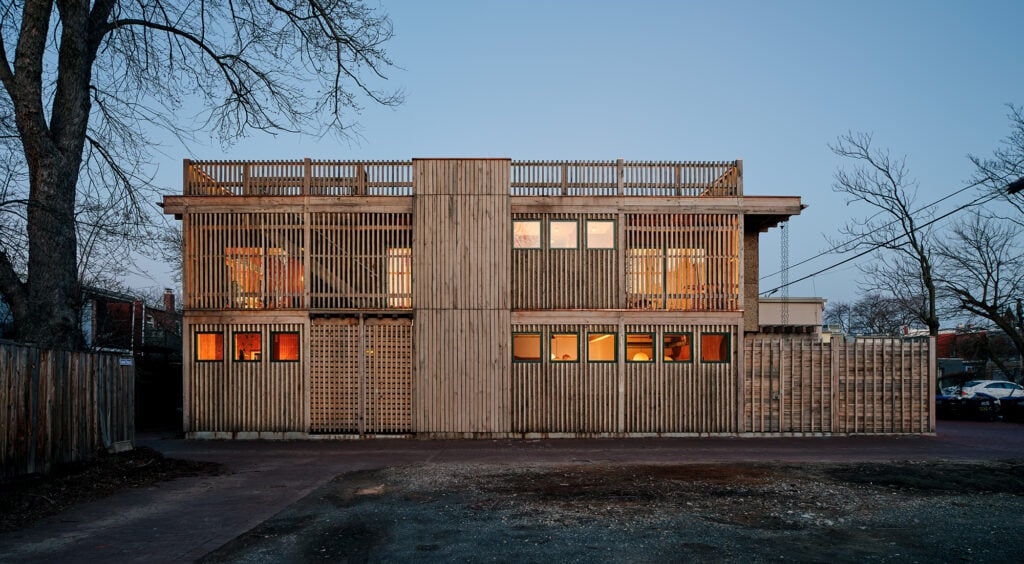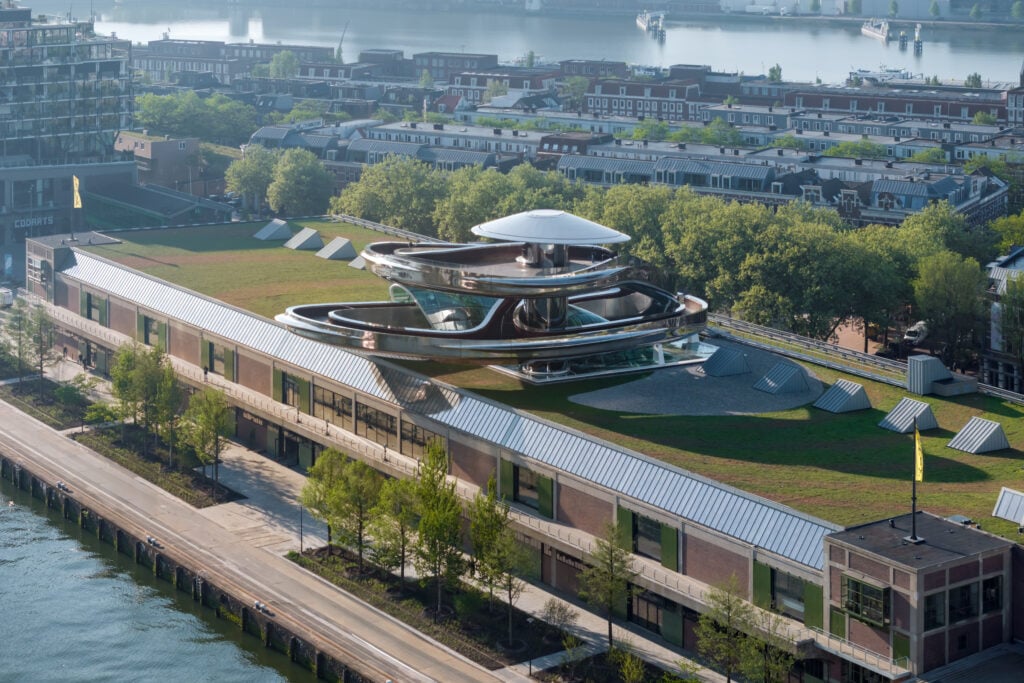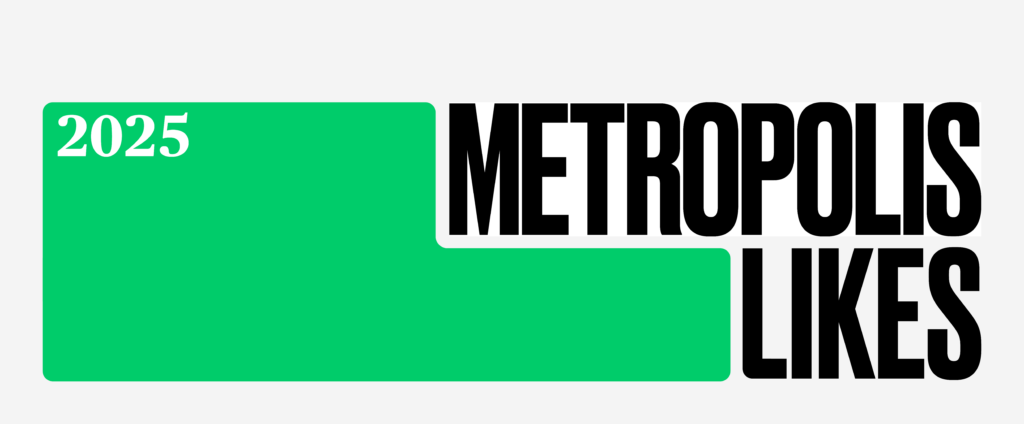
March 21, 2022
Building the Uncanny Corporate Modernism of Severance
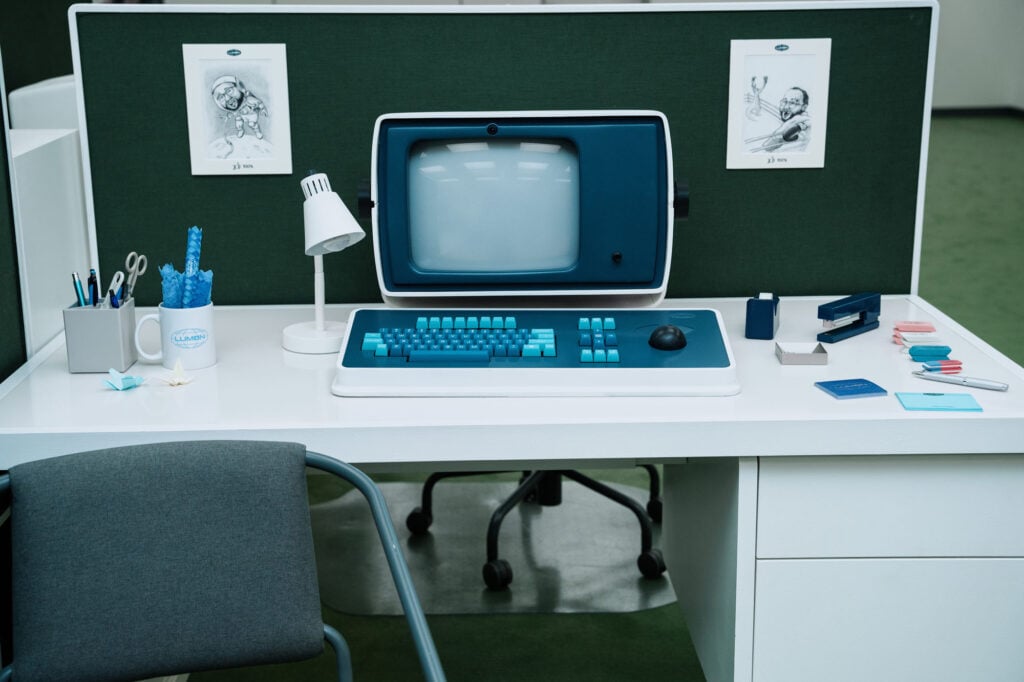
The world the characters inhabit inside the Lumon office is defined by an austere design language: white walls, endless corridors, low ceilings, and odd computer-like machines. This uncanny modernism is the brainchild of the series’ production designer Jeremy Hindle, who tells Metropolis, “My job is to totally envision what the world is and create it.”
For Hindle, midcentury references were key to developing an aesthetic for a fictional workplace where employees literally leave their personal lives (and memories) at the door. He explains that the clutter of personal lives that pervades the COVID-19-era office is everything the Lumon office—a high tech research center where no one is quite sure what they are working on or produce—is not.
“I thought, well, if you were going to create the ultimate workplace, which is what [Lumon is] doing… you’d go back to that, the basics, which is ‘you’re just here to work.’ So, it should be sterile, and beautiful, and playful,” he says.
An early piece of inspiration, he says, was the John Deere World Headquarters in Moline, Illinois, designed by Eero Saarinen and Kevin Roche (After Saarinen died in 1961, Roche completed the design. It opened in 1964.) “Those interiors blow me away…they’re powerful, they’re dominant, they’re architecturally stunning. But they’re also designed to impress you, to make you feel really powerful at work. So, you have a beautiful desk that’s custom made for this space. You have one phone, one pen.”
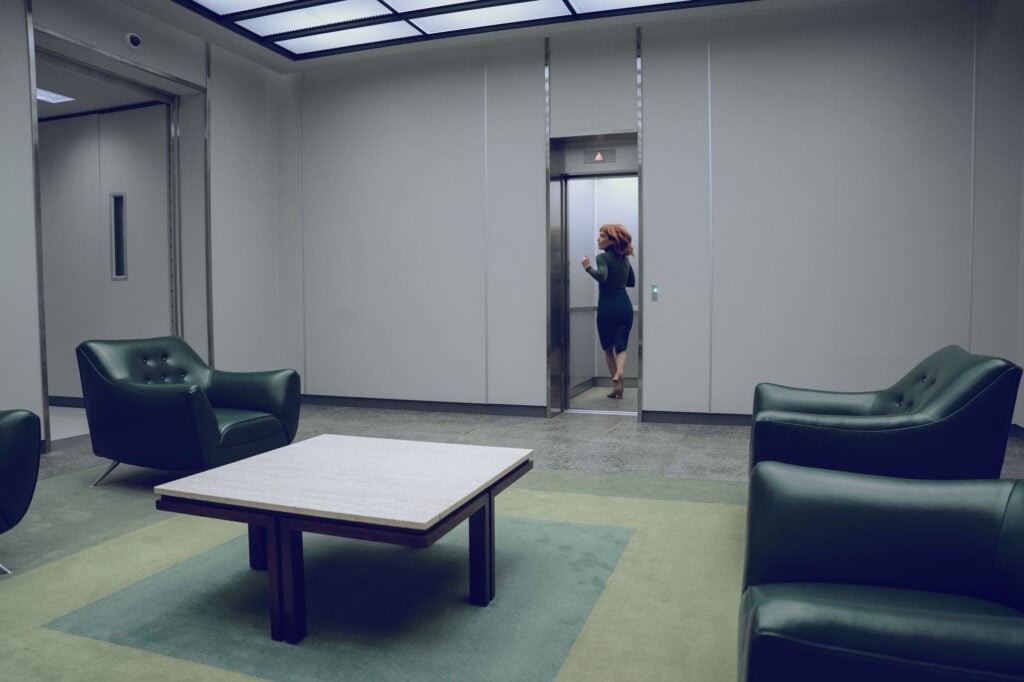
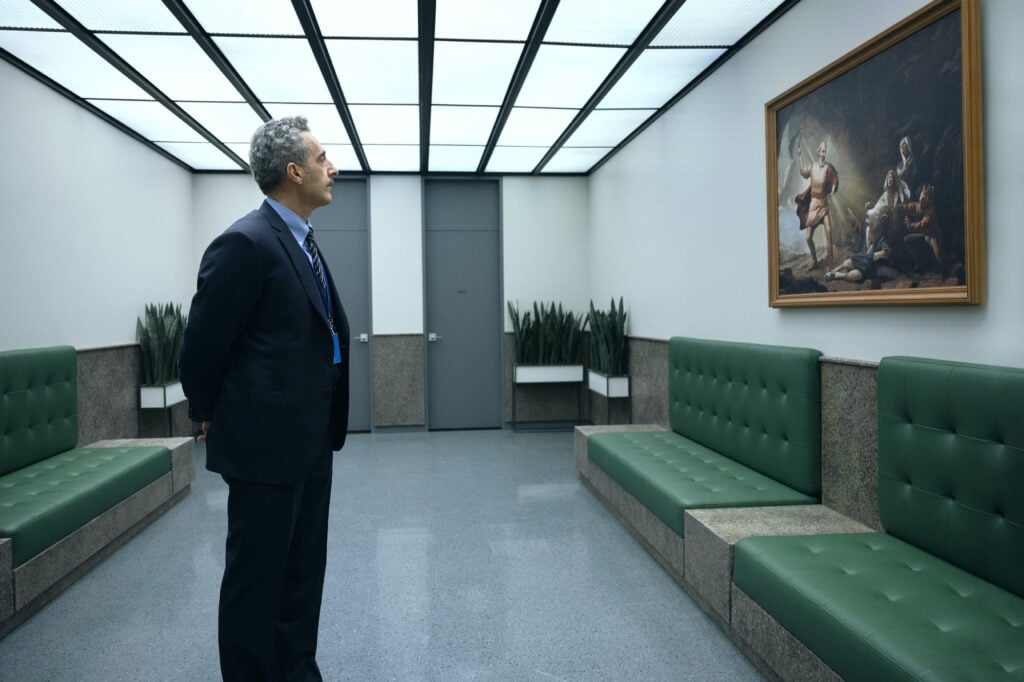
Enthusiasts of midcentury architecture will notice that when Mark Scout (played by Adam Scott) arrives to work each gray morning, he appears not at the John Deere HQ, but at another example of the Finnish architect’s titanic corporate headquarters: The Bell Labs Complex in Holmdel Township, New Jersey.
The show’s interiors, however, were all Hindle, and his aim was to create a workplace whose design wouldn’t make sense to anyone on the outside if the characters were able to recall it. The four main characters sit at an odd workstation supported by a central pillar marooned in a gigantic low-ceilinged room and operate small computer terminals that are hardly recognizable as such. With a round glass monitor that’s somehow also a touch screen and a built-in trackball interface, they look like an archaic branch on the personal computer’s evolutionary tree.
The effect is transportive, subtle enough to be of our reality, yet twisted in a way that suggests something perverse is at work in the Lumon corporation. “It’s not just about architecture,” says Hindle. “It’s about telling the story in a way that makes you feel uncomfortable, makes you feel comfortable, and makes you wonder: Why are they there? How are they there? And trying to tell the story visually.”
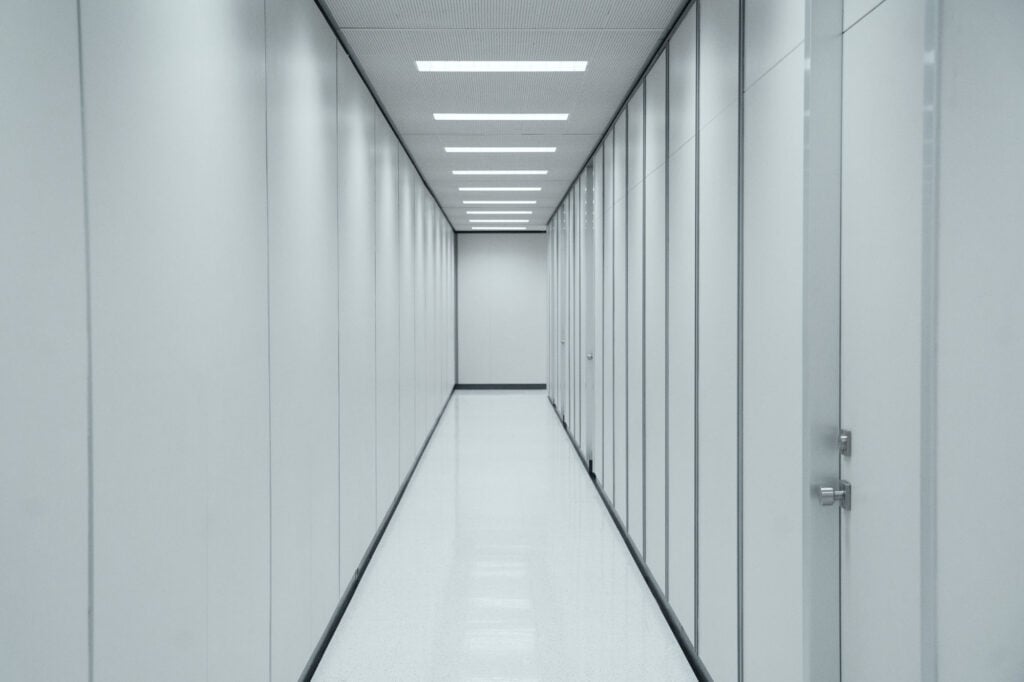

Would you like to comment on this article? Send your thoughts to: [email protected]
Related
Profiles
BLDUS Brings a ‘Farm-to-Shelter’ Approach to American Design
The Washington D.C.–based firm BLDUS is imagining a new American vernacular through natural materials and thoughtful placemaking.
Projects
MAD Architects’ FENIX is the World’s First Art Museum Dedicated to Migration
Located in Rotterdam, FENIX is also the Beijing-based firm’s first European museum project.
Products
Discover the Winners of the METROPOLISLikes 2025 Awards
This year’s product releases at NeoCon and Design Days signal a transformation in interior design.



